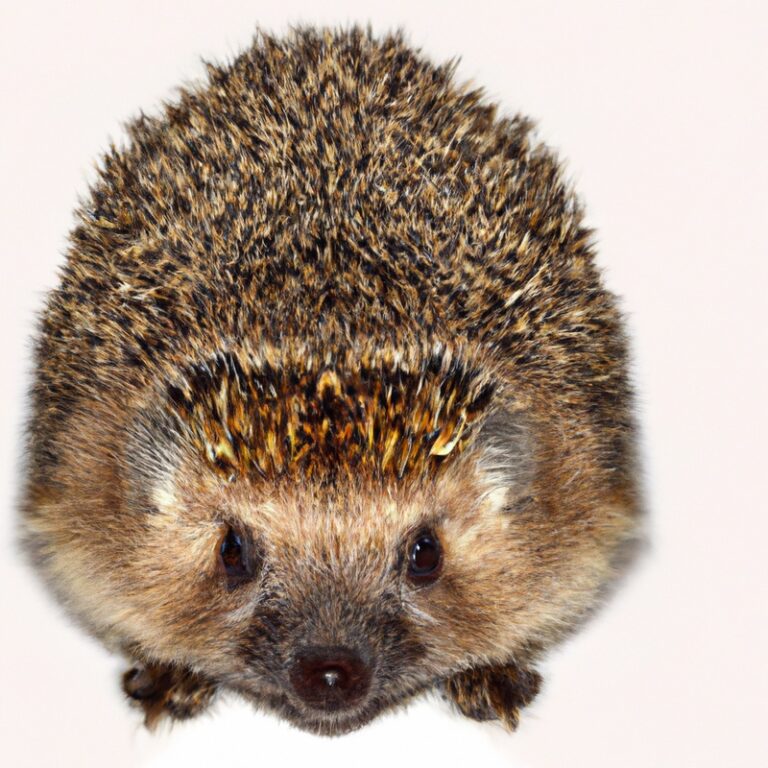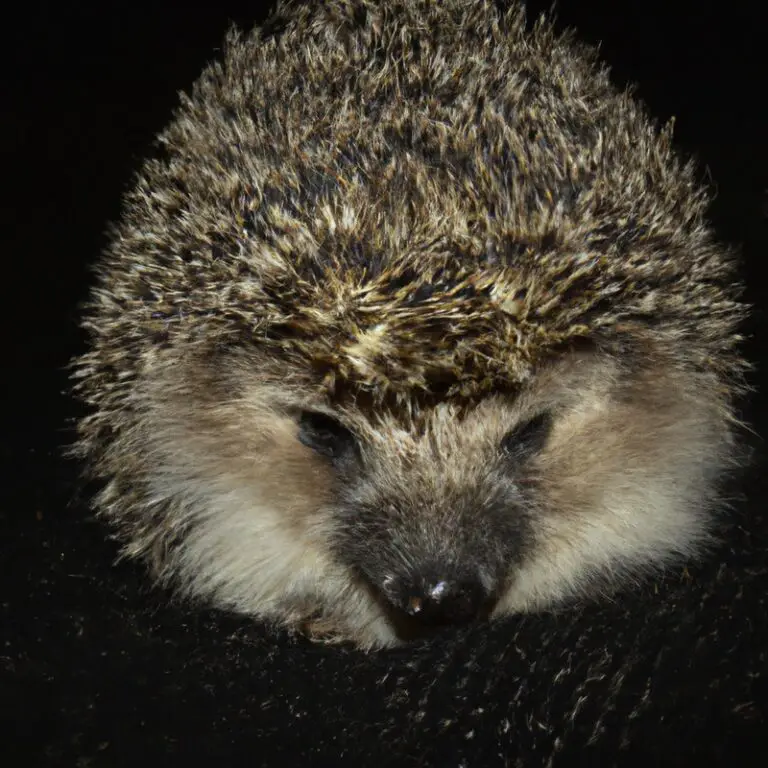How To Identify Hedgehog Footprints?
Key Takeaways:
- Hedgehog footprints are characterized by a distinct pattern of four toes and a heel pad.
- Look for footprints in soft soil, mud, or snow to increase your chances of identifying hedgehog tracks.
- Hedgehog footprints are typically around 2-3 centimeters wide and 3-4 centimeters long.
- Hedgehogs often leave footprints close to their burrows or in areas where they search for food.
Do you ever wonder about the secret lives of hedgehogs? These prickly creatures are known for their adorable appearance, but have you ever come across their footprints?
In this article, we’ll dive into the world of hedgehog footprints and explore why identifying them can be fascinating.
From their size and shape to the spacing between them, we’ll uncover the key characteristics that set hedgehog footprints apart from others. Additionally, we’ll discuss how to differentiate hedgehog footprints from those of other animals like small mammals, birds, and insects.
Plus, we’ll address some common questions you may have about hedgehog footprints.
So, get ready to become a track detective and unravel the mysteries of these tiny imprints in the ground!
| Sign | Description |
| Distinctive footprints | Small, round footprints with four toes and visible claws |
| Hind feet larger than front feet | The hind footprints are typically larger than the front footprints |
| Intertwined tail drag marks | Footprints often accompanied by drag marks from the hedgehog’s intertwined tail |
| No visible pad or heel marks | Hedgehog footprints do not have visible pad or heel marks |
| Found in gardens, parks, and woodland areas | Hedgehog footprints are commonly found in gardens, parks, and woodland areas |
Understanding Hedgehog Footprints
Understanding Hedgehog Footprints: Learn how to identify and interpret hedgehog footprints to gain insights into their presence and behavior.
What are Hedgehog Footprints?
Hedgehog footprints are unique tracks left behind by hedgehogs as they move around.
These footprints often have a distinct pattern that can help identify them.
Hedgehog footprints typically consist of four toes with long claws, arranged in a semi-circular shape.
The toes are close together and may leave behind imprints of their individual claws.
The size of the footprints can vary, but they are usually around 2 to 4 centimeters in length.
Keep an eye out for these distinctive footprints to know if hedgehogs have visited your garden or local area.

Why Identify Hedgehog Footprints?
Identifying hedgehog footprints is important because it allows you to determine if hedgehogs are present in an area.
By recognizing their footprints, you can track their movements, monitor their population, and assess their habitat preferences.
This information is invaluable for conservation efforts, as it helps researchers and wildlife enthusiasts understand the distribution and behavior of hedgehogs.
Additionally, identifying hedgehog footprints can aid in the identification of potential threats or risks to these creatures, allowing for targeted interventions to protect them.
Where to Look for Hedgehog Footprints?
Hedgehog footprints can be found in various places, so keep an eye out during your outdoor adventures.
Look for them in your garden, especially near hedges or dense vegetation.
Hedgehogs also leave their tracks in grassy areas, so explore meadows or fields.
Additionally, check near woodland edges, as hedgehogs often roam between habitats.
Remember to look for small paw prints with visible claw marks.
Observing hedgehog footprints can give you insights into their presence in your surroundings.
Happy tracking!

Identifying Hedgehog Footprints
To identify hedgehog footprints, look for the size and shape of the prints, the presence of claws and toes, and the spacing between the footprints.
Size and Shape of Hedgehog Footprints
Hedgehog footprints are distinguishable by their small size and unique shape.
They typically measure around 2 to 3 centimeters in length and width, resembling tiny ovals.
The footprint pattern consists of four distinctive toe prints arranged in a gentle arc at the front of the footprint, with a more rounded shape at the back made by the hedgehog’s padded heel.
By observing these characteristics, you can easily identify hedgehog footprints when you come across them in your garden or outdoor areas.
Claws and Toes in Hedgehog Footprints
Claws and Toes in Hedgehog Footprints: When identifying hedgehog footprints, examining the claws and number of toes is key.
Hedgehogs have five toes on their front feet and four toes on their back feet.
These toes are equipped with sharp claws that help them dig for food and create their burrows.
The presence of these characteristics in footprints can be a clear indication that they belong to a hedgehog.
So, pay attention to the number of toes and the presence of sharp claws when trying to identify hedgehog footprints.
Spacing between Hedgehog Footprints
Spacing between hedgehog footprints can vary depending on the speed and gait of the hedgehog. Generally, the distance between their footprints can range from 10 to 20 centimeters.
This allows them to move efficiently while searching for food or navigating their environment.
However, keep in mind that other factors, such as the terrain and the hedgehog’s size, can also affect the spacing between footprints. If you come across hedgehog footprints, measuring the distance between them can give you an idea of the hedgehog’s movements.
Differentiating Hedgehog Footprints from Other Animal Tracks
To identify hedgehog footprints from other animal tracks, pay attention to the shape and size of the prints, as well as the presence of claw marks.
Hedgehog vs. Small Mammal Footprints
Hedgehog footprints can be distinguished from those of small mammals by a few key characteristics. Hedgehog footprints usually have five toes that are close together and form a semi-circular shape, resembling a handprint.
They also have distinct claw marks.
In contrast, small mammal footprints, such as mice or rats, tend to have four toes with more spaced-out prints. Observing these differences can help you identify whether the footprints belong to a hedgehog or a small mammal.
Hedgehog vs. Bird Footprints
When trying to differentiate between hedgehog and bird footprints, there are a few key factors to consider. Hedgehog footprints typically have five distinctive toe marks, with the front and hind prints being similar in size.
In contrast, bird footprints usually have three toes pointing forward and one pointing backward.
The shape of the footprint can also provide clues. Hedgehog prints are usually more rounded, while bird prints are longer and have a more pointed shape.
Paying attention to these details can help you accurately identify whether the tracks belong to a hedgehog or a bird.
Hedgehog vs. Insect Footprints
Hedgehog footprints and insect footprints can be differentiated based on a few key characteristics.
Hedgehog footprints are typically larger in size and have four distinct claw marks.
In contrast, insect footprints are much smaller and often appear as multiple, closely spaced dots or lines.
Additionally, hedgehog footprints may show signs of the hedgehog’s belly dragging along the ground, while insect footprints tend to be more uniformly spaced without any drag marks.
By observing these differences, you can easily identify whether the footprints belong to a hedgehog or an insect.
Frequently Asked Questions (FAQs)
Can hedgehog footprints be found in urban areas?
Yes, hedgehog footprints can be found in urban areas. Hedgehogs are known to adapt to various habitats, including urban environments.
They often roam through gardens, parks, and even streets at night in search of food and shelter.
So, if you come across small paw-like prints with five toes, it could very well be the footprint of a hedgehog. Keep an eye out for these distinctive markings, as they are a great indication of hedgehogs visiting your area.
How long do hedgehog footprints last?
Hedgehog footprints can last for several hours or even days, depending on the weather conditions and the type of surface they are on. In dry conditions, the footprints may disappear quicker, while in damp or muddy areas, they may last longer.
It’s important to note that hedgehog footprints can vary in size and shape, but they often resemble small oval-shaped indentations with four claw marks.
If you come across hedgehog footprints, take a moment to appreciate these delightful creatures and remember to tread lightly to preserve their delicate trails.
Can hedgehog footprints be found in winter?
Yes, hedgehog footprints can be found in winter.
Hedgehogs are active throughout the year, even during the colder months.
In fact, they do not hibernate like some other animals and may continue to search for food during winter.
So, if you see small footprints with claw marks in the snow or mud, it could be a sign that a hedgehog has passed by.
Keep an eye out for these distinct tracks and you might just spot a hedgehog in your neighborhood!
Final Verdict
Identifying hedgehog footprints can be an exciting and rewarding endeavor. By understanding the characteristics of hedgehog footprints, such as size, shape, claws, toes, and spacing, you can easily differentiate them from other animal tracks.
Knowing where to look for hedgehog footprints, such as in gardens, parks, and woodlands, can increase your chances of finding them.
While hedgehog footprints may be more commonly found in rural areas, they can also be spotted in urban environments. By learning to identify hedgehog footprints, you can contribute to the conservation efforts of these remarkable creatures.
Happy tracking!








